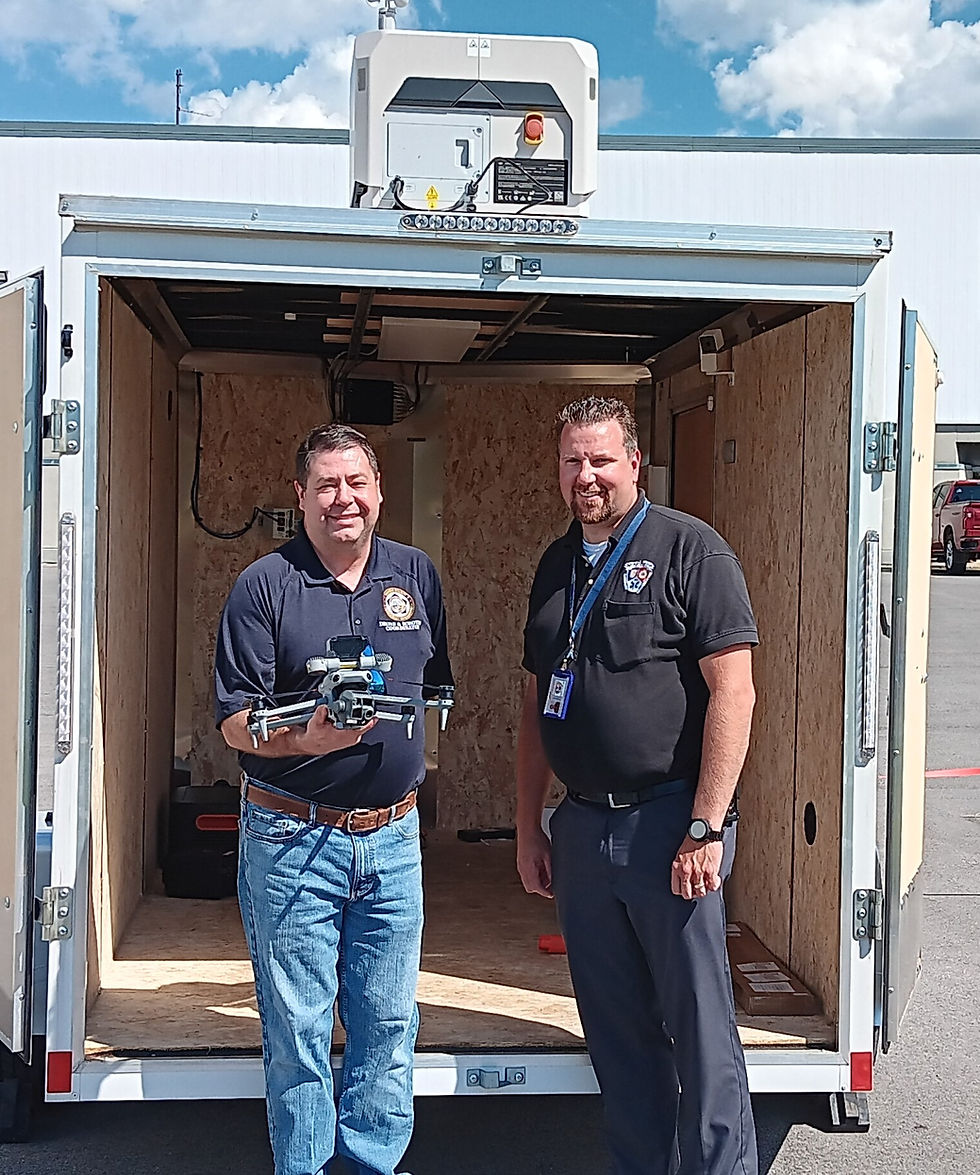Why Multi-Sensor Networks Win Counter-UAS
- NUAIR Defense

- Nov 3
- 3 min read
(and why “single-box” defenses keep losing to cheap, clever drones)
Single sensors don’t win against small-UAS. Networks do. If your counter-UAS (C-UAS) plan starts and ends with one sensor type then you are buying blind spots, false alarms, and slow decisions. The fix is a fused, open, mobile network that turns many partial truths into one trusted picture and one fast decision.

The threat has changed. So should your architecture.
Drones are plentiful, affordable, and adaptable. They fly low, hide in clutter, spoof, go dark, and show up where traditional air defense isn’t looking. A point solution that shines in a lab rarely survives contact with weather, urban RF noise, dense crowds, and swarming tactics – and those who work in this space know this firsthand.
Reality check:
RF-only → misses “dark” drones, urban noise buries the signal.
Radar-only → tiny cross-sections + ground clutter = gaps.
EO/IR-only → line-of-sight, weather-dependent, brittle.
Single-feed stacks → easy to saturate, easier to fool.
What a multi-sensor network actually is.
A deliberate, vendor-agnostic architecture that fuses diverse modalities – RF, radar, EO/IR, acoustic, passive emitters, Remote ID, cooperative surveillance and those sensing systems in stealth mode (you know who you are) – into a single, de-duplicated track with confidence scoring and clear handoffs to effectors.
Core ingredients:
Open ingest & APIs: Vendor-agnostic interfaces and documented schemas so you can add sensors/effectors without a forklift upgrade.
Time & geo truth: Robust PNT, synchronized clocks, and site models (terrain/structures) to kill ghosting and double tracks.
Identity management: Blue-force exclusion, Remote ID, ADS-B/ATC overlays, and policy rules to avoid fratricide and false positives.
Single-pane operations: Detect → classify → track → decide/mitigate in one workflow, with role-based views for operators, LE, and command.
Evidence & learning: Chain-of-custody logging, AAR bundles, and exportable data for investigations and continuous improvement.
Design principle: Layered diversity beats “perfect sensors.”
One sensor’s weakness should be another’s strength.
Operational design principles that win.
Mobility as a feature: Pack, move, and fight. VIP moves, pop-up venues, and convoys demand architectures that redeploy fast.
Degraded-mode thinking: Plan for GNSS issues, bandwidth constraints, and partial failures; prioritize essential data paths.
Human-in-the-loop: Use ML to triage and recommend, not to disappear the operator when stakes are high.
Policy-aware by design: Build with clear CONOPS, authorities, and cross-agency coordination in mind from day one.
Metrics that actually matter (and how to test them).
If you can’t measure it in the field, you can’t trust it in a crisis. Prioritize:
Probability of detection & false-alarm rate (by class, range, clutter level)
Track continuity (across sensors, handoffs, and maneuvers)
Time to classification and time to effect
Geolocation accuracy (CEP/R95 in real environments)
Operator load (alerts/hour, acknowledgments, intervention rate)
Availability (MTBF/MTTR across the full network, not just a node)
Instrument your demos to capture these, or you’re running theater – not testing.
Buyer beware: “It’s a Trap”.
Closed ecosystems that lock you into one vendor’s roadmap and block future sensors.
“Pretty UI, messy tracks” → if fusion isn’t de-duplicating and scoring confidence, the map is lying to you.
Bandwidth bombs → uncontrolled video and radar volume that crushes the link when you need it most.
No training/CONOPS → operators get blamed for what the architecture never supported.
The roadmap from slide deck to field data.
Assess: Threats, venues, and authorities; define decision-quality metrics up front.
Integrate: Open interfaces; add sensors/effectors without breaking the stack.
Stress: Real environments, moving pieces, adverse weather, and red-team tactics.
Prove: Deliver an evidence pack (scores, tracks, AAR) people can act on.
Iterate: Tune fusion, add modules, and harden for production.
Multi-sensor networks outperform single-sensor systems because they transform fragmented detections into a unified, trusted air picture – turning confusion into actionable clarity. In counter-UAS defense, resilience comes not from one perfect sensor but from many working together through open, mobile, and data-fused architectures. The future of winning the low-altitude fight belongs to those who design for integration, adaptability, and proof in the field – not promises on a slide.
ABOUT NUAIR Defense
NUAIR Defense is the defense-division of NUAIR, marrying commercial innovation with rapid-deployment defense systems. We deliver a fused, vendor-agnostic services stack — taking tech from validation & certification to real-time operations and sustainment —that enables layered, mobile counter-UAS and advanced air-mobility defense architectures. Email contact@NUAIRDefense.org to schedule an operational validation sprint.





Comments